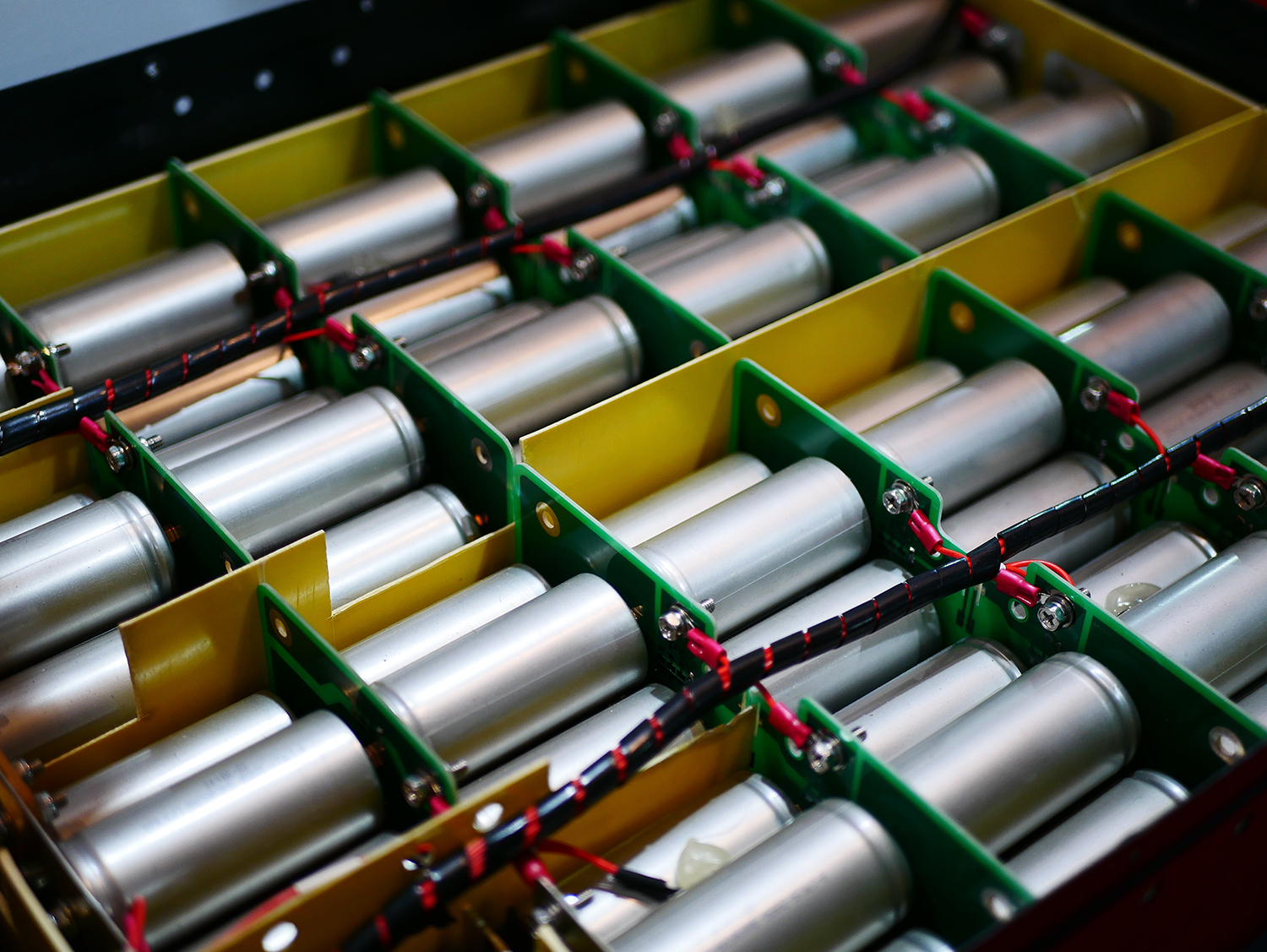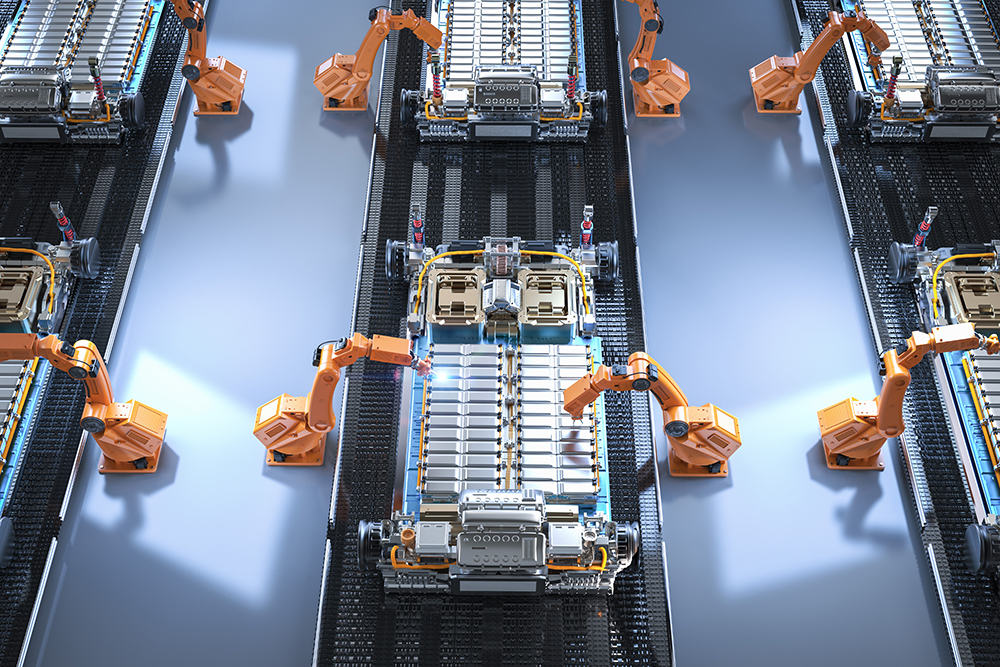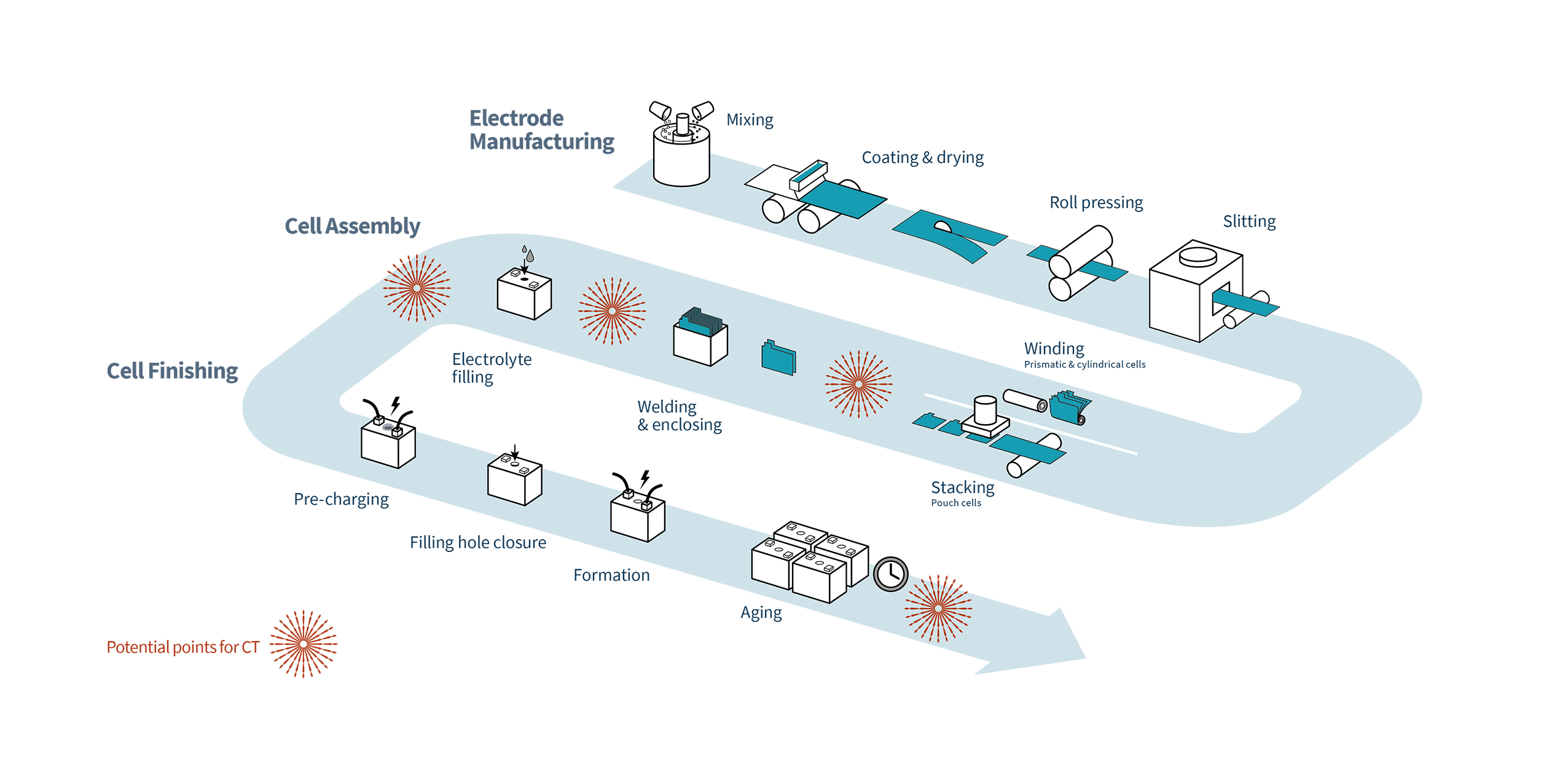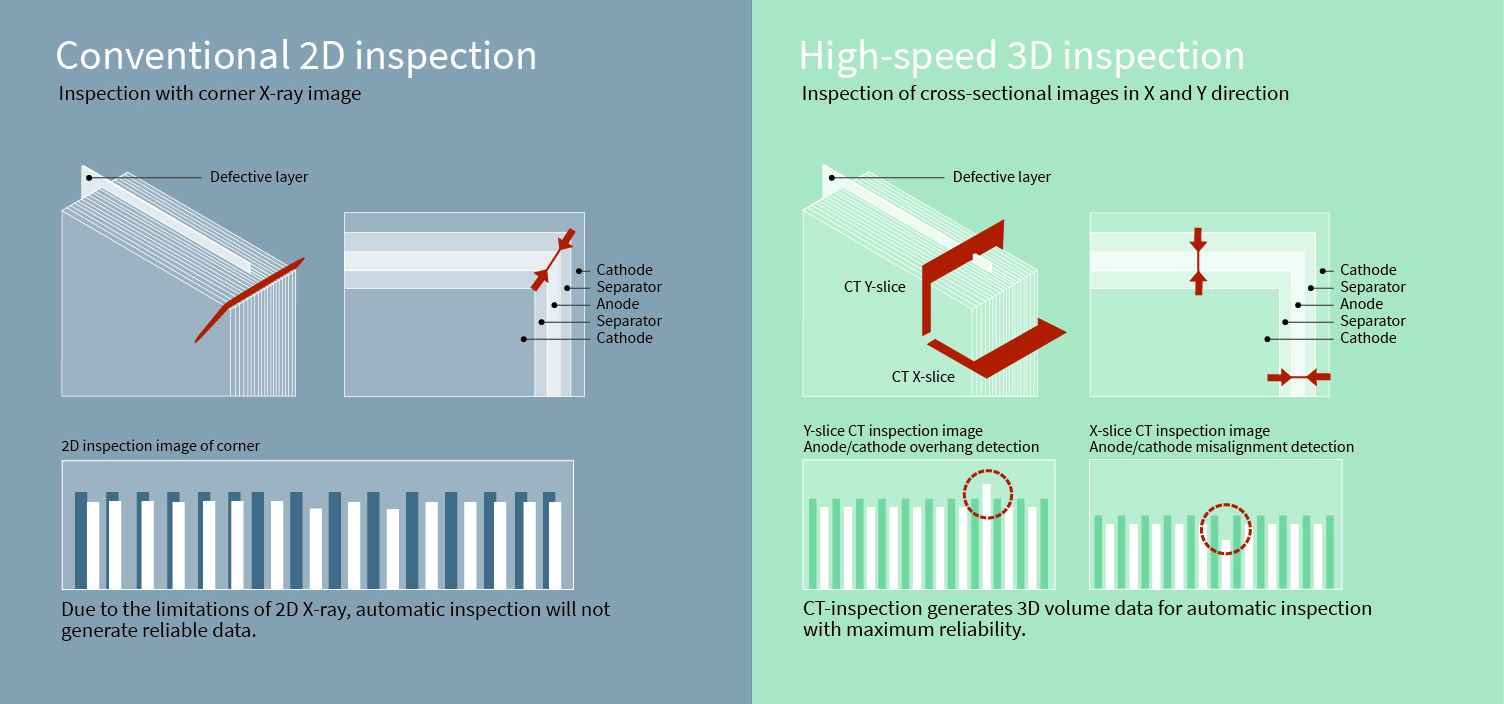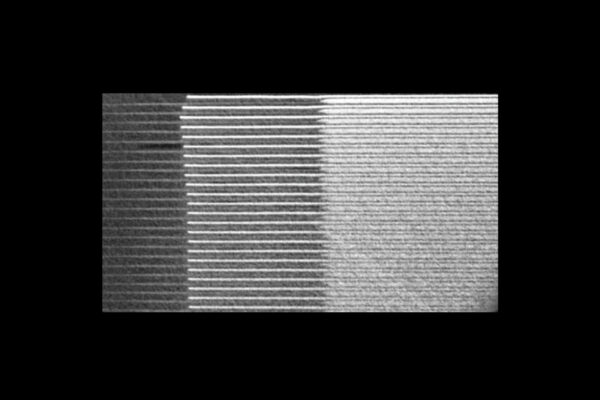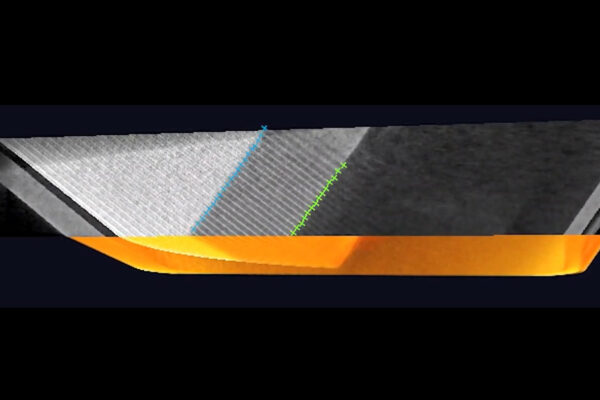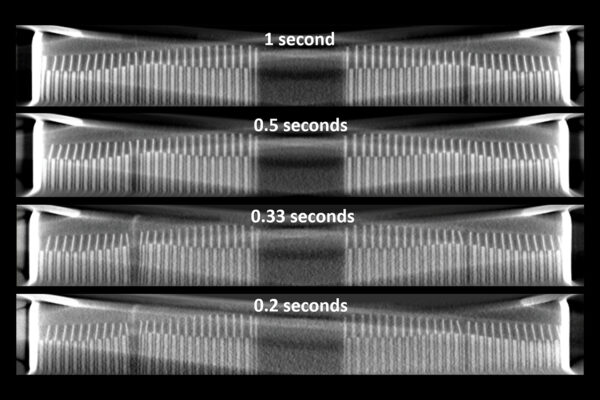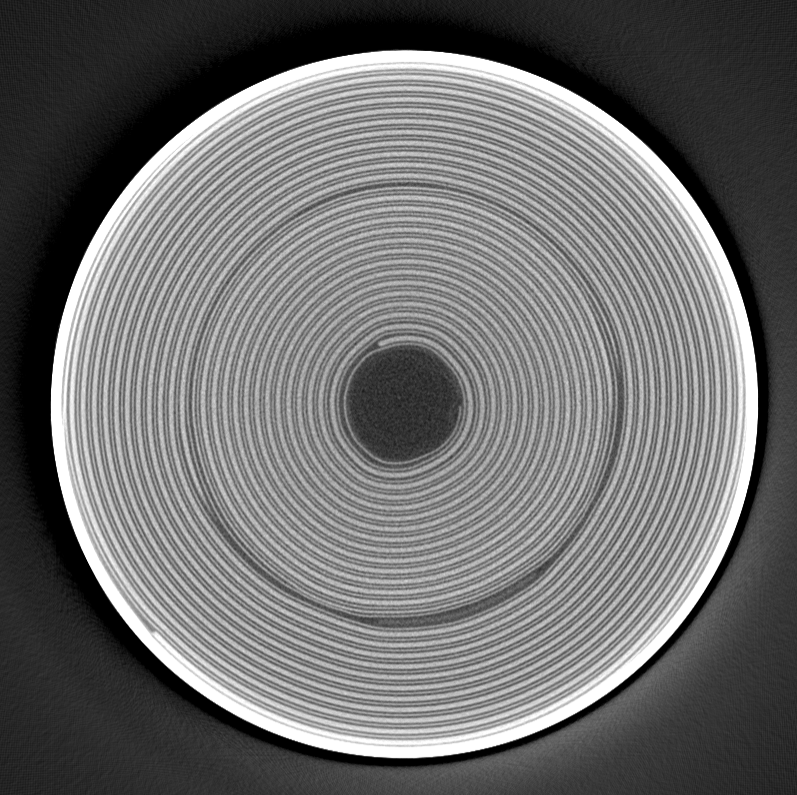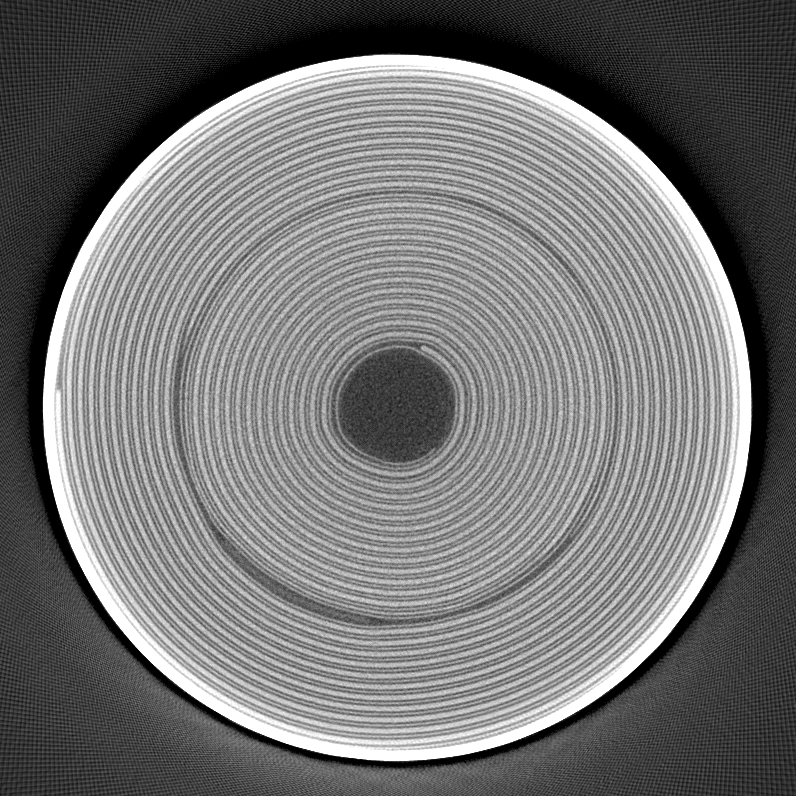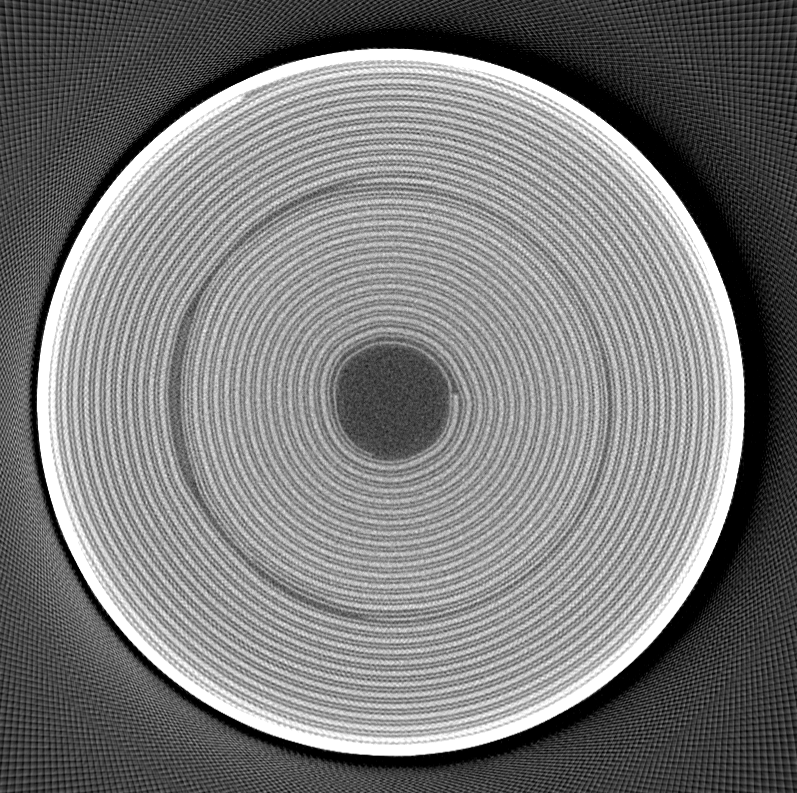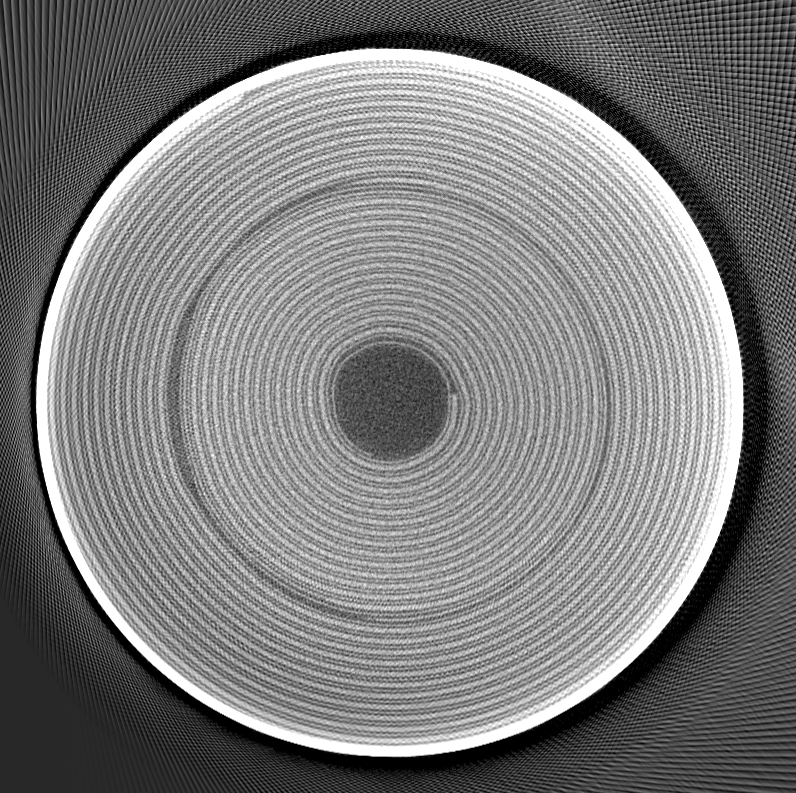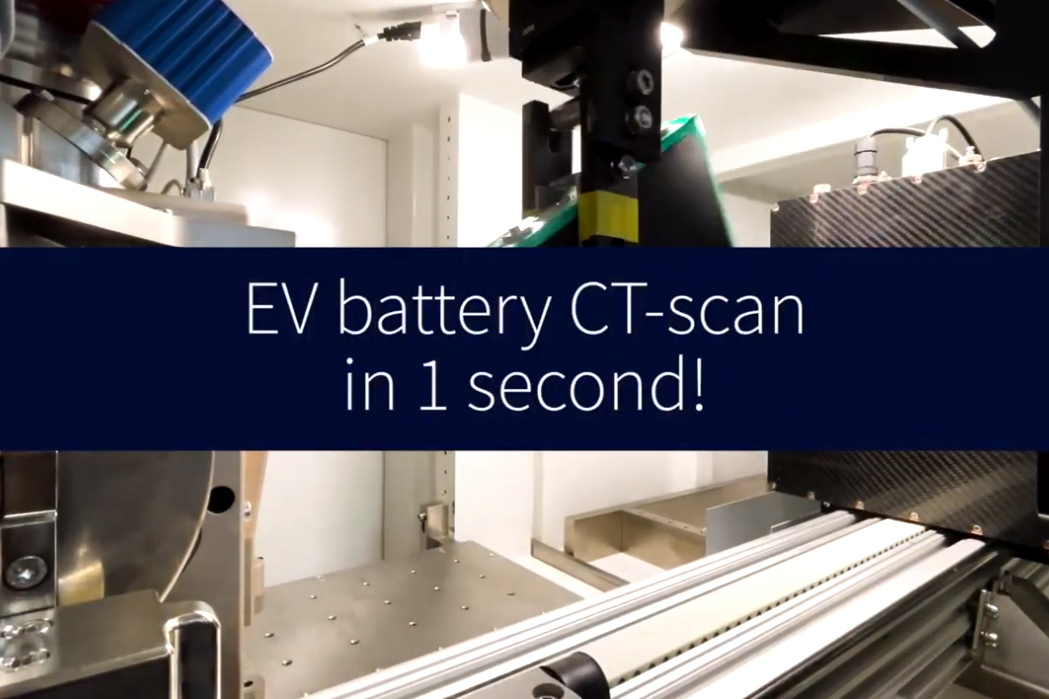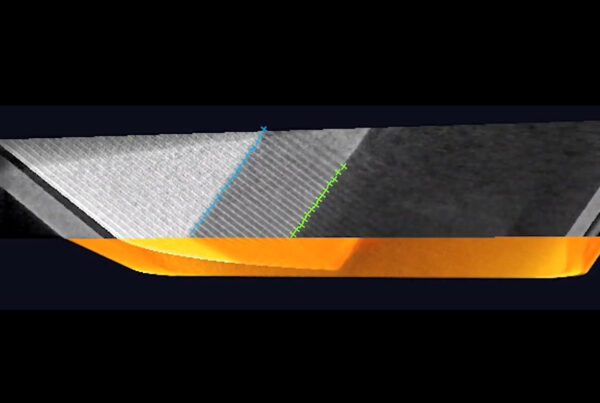High-throughput CT inspection is here
Why speed is no longer the limit for inline CT inspection of EV batteries
As the demand for lithium-ion batteries continues to rise, high-resolution, high-throughput 3D inspection systems will be essential to generating deeper manufacturing insights than current industry-standard practices allow. Whether the aim is to ramp up production faster, improve first-pass yield or shorten feedback loops between production cycles, one-second CT imaging speeds have the potential to revolutionize the way defects are detected and root-caused.
Global production of EV batteries is growing at an unprecedented rate. Yet, in many respects, manufacturers are still developing best practices in real time as they seek to simultaneously ramp up throughput and yield for the massive investment that is a modern gigafactory. To ensure the safety of the millions of EV batteries these factories will produce, and to limit the scope of potential recalls, new inspection methods are needed to enable faster identification and resolution of safety-critical defects.
Currently, a combination of 2D inline inspection, non-destructive testing and electrochemical characterization are typically used to ensure battery quality and future performance in the field. However, this suit of status quo quality control techniques does not provide sufficient inspection coverage and speed to prevent Gigafactories from occasionally bleeding large numbers of defective cells into EVs.
Fortunately, recent advances in high-brightness X-ray source technologies are enabling CT scanning to become a quality control technology that is compatible with the throughput and cost requirements of high-volume cell manufacturing.
The promise of 3D CT scanning
The amount of valuable quality assurance data captured by industrial Computed Tomography (CT) is difficult to overstate. By generating a complete 3D density map of the battery cell’s internal structure, it allows for a comprehensive visualization and analysis of inner structures, making it easier to identify defects that may affect battery functionality or safety. Extensive metrology data such as parts alignment, thickness uniformity, and curvature control, can also be monitored to ensure conformance with design and production specifications.
Enhancing defect detection and quality control
CT inspection can be utilized at different stages of the manufacturing process, typically in-line during the assembly process or at the end-of-line after formation. By integrating CT inspection into the assembly step, defects can be automatically detected in real time to enable immediate corrective actions, thereby eliminating yield losses and quickening change control-type processes.
Post-formation, CT inspection provides complementary data on critical physical features, such as cathode dimensions, which can be correlated with cell energy. This level of automated defect detection and high-precision metrology creates valuable new insights into battery performance and consistency, thereby minimizing the risk of defective cells making their way into EVs.
Eliminating common battery defects
Unlike traditional 2D inspection, 3D X-ray imaging provides complete volumetric data over the entire battery cell. The importance of this can be illustrated by two common failure modes: anode-cathode overhang and particle contamination – which 2D imaging cannot adequately probe.
Anode-cathode overhang
Anode-cathode (AC) overhang is a critical parameter in guaranteeing battery safety. If the cathode electrode overhangs the anode it’s facing, the battery cell will most likely fail over its useful life. Unfortunately, today’s 2D inspection systems do not give sufficient information to properly measure AC overhang throughout an entire cell.
The following images, of pouch, prismatic and cylindrical cells, show the ability of CT systems to generate valuable metrology and inspection data regarding AC overhang. These images were captured in just one second, or less, by an Excillum MetalJet E1+ X-ray source, making the technique highly suitable for inline and end-of-line inspection during high-volume manufacturing.
Particle contamination
The presence of foreign debris, such as particles or metallic contaminants originating from prior manufacturing steps, can both impede proper charging of the battery and potentially pose safety risks. CT inspection makes it possible to identify these contaminants in order to resolve related equipment maintenance or cleanliness issues that may contribute to introducing unwanted debris into the battery cells.
The need for speed
While most EV OEMs and battery cell producers are aware of the potential of CT inspection, it is often perceived as too slow, too expensive, and too cumbersome to be implemented in high-volume manufacturing environments. Its use has therefore been limited to research and development, or to similar low-volume non-destructive testing and failure analysis applications.
One of the major limiting factors in today’s commercial CT inspection systems is related to hardware. In particular, most X-ray sources currently available are simply not bright enough to meet the required cycle times of leading cell manufacturers, whose gigafactories typically produce millions of cells per day. By contrast, conventional X-ray source technologies tend to range from 15 to 120 seconds for a single imaging cycle, making them incapable of reaching throughputs higher than a few hundred cells per day.
These CT images of a cylindrical cell were captured by a MetalJet E1+.
An exponential increase in throughput
Excillum’s high-brightness X-ray sourcesmake it possible for the industry to address these concerns for the very first time. The Excillum MetalJet E1+ has already been proven to generate a full rotational CT scan of an EV battery cell, with micrometer precision, in just a one-second imaging cycle. This is due to the fact that the Excillum source produces an X-ray flux 15-20 times higher than that of conventional X-ray tubes. Depending on the performance of the detector and imaging software, the MetalJet makes it possible to increase inspection throughput up to tens of thousands of cells per inspection system per day.
The business impact of a one-second scan
This capability to scan batteries far more quickly substantially strengthens the business case for inline and end-of-line CT inspection. The ability to scan thousands, or tens of thousands, of cells per day not only significantly lowers the manufacturer’s cost per scan, but it also enables the collection of comprehensive data from a more representative sample size of each production batch.
Once a defect is detected, this additional data will make it possible to build more robust quality assurance systems that can be associated to the quality of material batches, equipment settings, electrochemical analyses and end-of-line quality control systems, all of which provide critical insights for enhanced traceability and process control. Ultimately, high-speed CT scanning enables a more comprehensive and accurate root-cause analysis of potential quality issues, compared to existing quality control systems. Whether it’s used to resolve quality issues more rapidly in order to accelerate production ramp-up or to quickly root-cause defects in order to minimize the scope of potential recalls, high-volume CT scanning has the potential to create massive value across many stages of battery cell production.
Towards a new standard in inspection quality
The challenges faced by battery manufacturers in scaling up production while maintaining quality are immense. With its ability to accurately detect defects, facilitate quality control and provide vital insights into the integrity of both manufacturing processes and end products, CT inspection can play an important role in securing high-quality production at the extremely high volumes that today’s market demands. Equipped with a high-resolution, high-speed Excillum MetalJet X-ray source, the next generation of CT inspection systems will unleash unprecedented volumes of actionable data needed to ensure a safer, more profitable future for battery manufacturers and their consumers.
Interested in a demonstration?
Together with our partners, we have demonstrators where you can experience first-hand the capabilities of our high-speed 3D CT inline inspection system. Are you a manufacturer of batteries? Fill out the form below to book a demo with us!
